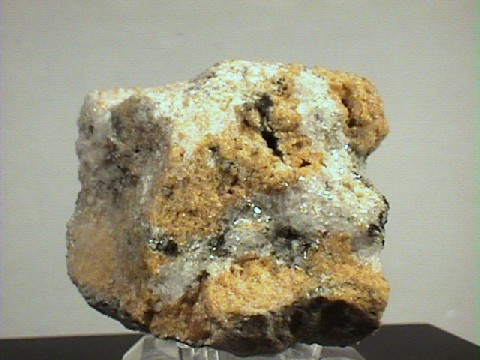 THE
MINERAL HUMITE
THE
MINERAL HUMITE
- Chemistry: ((Mg, Fe)2SiO4)3 - Mg(F, OH)2, Magnesium Iron Silicate Fluoride Hydroxide.
- Class: Silicates
- Subclass: Nesosilicates
- Group: Humite
- Uses: Only as mineral specimens.
Specimens
Humite is the namesake member of the Humite Group of minerals. Members of the Humite Group are noted for having a mixture of silicate layers and oxide layers in their structures. The silicate layers have the same structure as olivine. The oxide layers have the same structure as brucite. In the case of humite, there are three consecutive olivine layers that alternate between each brucite layer. The most common member of the Humite Group is chondrodite which has only two olivine layers between each brucite layer. Humite is a fairly rare mineral. It is found in hydrothermal veins and contact and regionally metamorphosed dolomitic limestones as small prismatic crystals.
PHYSICAL CHARACTERISTICS:
- Color is commonly yellow, but also white, brown or orange.
- Luster is vitreous.
- Transparency: Crystals are translucent.
- Crystal System: Orthorhombic; 2/m 2/m 2/m
- Crystal Habits include small prismatic to rounded crystals, but as is most commonly the case, as embedded grains.
- Cleavage is poor in one direction, basal.
- Fracture is subconchoidal.
- Hardness is 6.
- Specific Gravity is 3.2 - 3.3
- Streak is white.
- Associated Minerals include magnetite, diopside, spinel, biotite, serpentine, chondrodite, olivine and calcite.
- Notable Occurrences are include Monte Somma, Mount Vesuvius, Italy; Paragas, Finland; Varmland, Sweden; Tilly Foster Mine, Brewster, New York, USA and some other localities.
- Best Field Indicators are color, associations, environment of formation and hardness.


